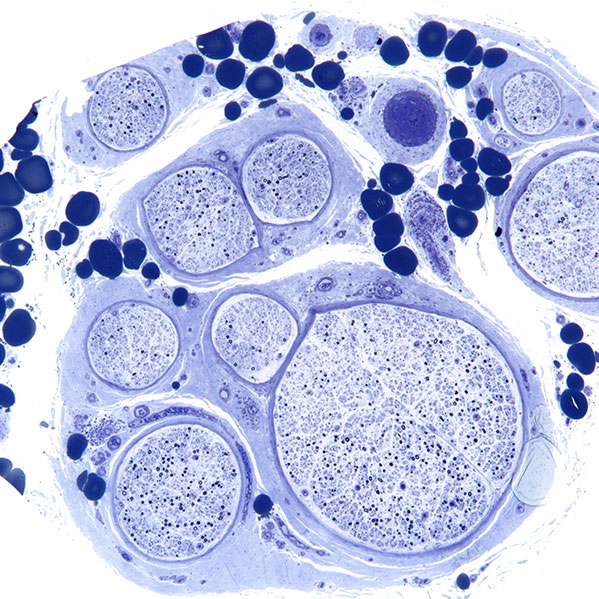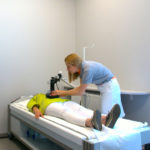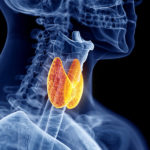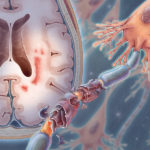 Wróć do poprzedniej strony
Wróć do poprzedniej strony
Polyneuropathy – causes, symptoms, treatment

Numbness in the hands, tingling in the limbs, reduced sensation? These are among the many symptoms of polyneuropathy. It is a disease that can occur at any age. What tests should be performed to diagnose polyneuropathy? And what are the causes of the disease?
Polyneuropathy - causes
Polyneuropathy is known as peripheral neuropathy, characterized by generalized multifocal peripheral neuron damage manifested by motor and sensory loss syndromes.
Polyneuropathy can occur at virtually any age. The causes of the disease are genetic or acquired. Some types of polyneuropathy, especially those with a predominantly genetic basis, occur in specific age groups.
Polyneuropathy can be divided by the type of nerve fiber damage:
- axonal,
- demyelinating,
- mixed axonal-demyelinating.
In most cases, polyneuropathy, especially demyelinating polyneuropathy, causes motor and sensory loss syndromes, mainly in the feet and hands.
Polyneuropathy, which manifests mainly with motor problems, can occur due to the following:
- Lyme disease,
- lead and hexane poisoning,
- porphyria (a rare hereditary disease that manifests itself with photophobia, among other symptoms).
Polyneuropathy, in which sensory symptoms predominate, can be caused by, for example:
- vitamin B6 deficiency,
- thallium poisoning,
- amyloidosis (otherwise known as starchiasis – a disease in which a biologically inactive protein (amyloid) is deposited in the cells of various organs),
- diabetes,
- cancer.
Polyneuropathy - symptoms
The symptoms of polyneuropathy vary due to the cause, the severity of the disease processes, and the type of nerve fiber damage.
The most common symptoms of polyneuropathy are:
- numbness,
- tingling,
- paresthesias (otherwise known as peripheral sensation),
- reduced muscle strength,
- decreased sensation,
- pain in the extremities.
LLess common accompanying symptoms of polyneuropathy are:
- stinging,
- burning,
- a squeezing or burning sensation,
- pain perception disturbances.
Autonomic system involvement during polyneuropathy may also occur:
- drops in blood pressure,
- disorder of sweat secretion,
- vasomotor disturbances,
- pupil constriction.
Polyneuropathy is divided into two types – hereditary and acquired polyneuropathy.
Hereditary polyneuropathy
The neuropathy field is referred to as sensorimotor polyneuropathy – HMSN, CMT. Types of the disease are distinguished by age, degree of inheritance, types of nerve fiber damage, and severity.
Acquired polyneuropathy
The most common type of acquired neuropathy is Guillain-Barré Syndrome. This disease occurs in 1 to 2 cases per 100,000 people per year.
It is an acute demyelinating inflammation accompanied by axonal motor polyneuropathy. Nerve damage occurs due to autoimmune processes. GBS can occur at virtually any age but is less commonly seen in children.
GBS can result from complications from gastrointestinal infections such as Campylobacter, Zika virus infection, HIV-acquired immune deficiency, hepatitis B, cytomegalovirus, and even hemiplegia, smallpox, or influenza.
GBS usually manifests itself through:
- root pain,
- autonomic disorders (e.g., cardiac arrhythmia, impaired perspiration),
- respiratory failure,
- paresthesias,
- foot pain,
- limb paresis,
- facial muscle paresis,
- weakness.
Chronic inflammatory demyelinating polyneuropathy
Another common variant of acquired polyneuropathy is chronic inflammatory demyelinating polyneuropathy (CIDP). This type of polyneuropathy is characterized by the involvement of spinal roots and peripheral nerves, which results in flaccid paresis with the abolition of deep reflexes and sensory disturbances. The condition occurs in 1 case per 100,000 people of all ages.
This polyneuropathy can occur without an apparent cause or be preceded by an infection. Sometimes it appears in pregnant women (especially in the third trimester or postpartum). As for the symptoms, these develop for at least two months.
Yet another variety of this polyneuropathy is Lewis-Samner syndrome (MADSAM). On the other hand, this variety is characterized by a subacute course, asymmetrical, occupying mainly the upper extremities (sometimes the lower extremities and cranial nerves are also involved). Treatment consists of reducing neurological defects and preventing recurrence. Treatment includes immunoglobulins, steroids, plasmapheresis, and sometimes immunosuppressive drugs. Pharmacological treatment and rehabilitation are critical in this case.
Multifocal motor polyneuropathy with conduction block
In addition, multifocal motor polyneuropathy with conduction block (MMN) should be mentioned. This type of polyneuropathy is characterized by a slow course without remission, complete persistent or partial conduction block in motor fibers, and asymmetric involvement of the extremities (especially the upper extremities).
The condition occurs in 1 to 2 cases per 100,000 people. The most vulnerable patients are those in the 20 to 50 age group (especially men). Symptoms include distal muscle atrophy and asymmetric paresis. Myokymia, fasciculations and increased muscle spasms are also common. Treatment includes immunoglobulins and, if there is no improvement, immunosuppressive drugs (such as azathioprine, rituximab or cyclophosphamide).
Diabetic polyneuropathy
Another very common acquired polyneuropathy is diabetic polyneuropathy. In the classic variety of this condition, the symptoms are numbness, burning, coldness, tingling and pain in the distal parts of the extremities. However, when there are symptoms such as pain, severe asymmetric muscle weakness and atrophy of the thigh adductors, iliac-thigh muscle and quadriceps, it is a sign that we are dealing with the so-called diabetic amyotrophy. This condition is mainly found in elderly people with advanced insulin-dependent diabetes. It can persist for 1 to 3 years.
Acquired polyneuropathies also include: neuropathy in hypothyroidism, uremic neuropathy, diphtheria neuropathy, drug-induced neuropathy, alcoholic neuropathy, neuropathy in celiac disease and liver disease.
Polyneuropathy - treatment
When it comes to the treatment of polyneuropathy, it includes causal treatment or symptomatic treatment. The former, in the case of immune-mediated polyneuropathy, in turn, includes the administration of immunoglobulins, glucocorticosteroids, immunosuppressive drugs, and sometimes the performance of plasmapheresis, which is a procedure for cleansing blood plasma of pathological proteins. As for polyneuropathies occurring in the course of metabolic diseases such as diabetes or endocrinological diseases, their treatment mainly focuses on treating the underlying disease.
Symptomatic treatment of polyneuropathy, on the other hand, consists of pain management and physiotherapy, which includes classical massage, whirling massage, exercises on sensorimotor cushions, exercises with various textures, strengthening and neuromobilization exercises. In addition to this, it should be added that lifestyle recommendations should be followed, namely to wear cotton socks, non-pressing footwear, slippers with a soft pad, or take moderate-intensity walks.
Contact information
55-010 Żerniki Wrocławskie
Working hours
Have a question?
Use the quick contact form!
Contact information
55-010 Żerniki Wrocławskie




